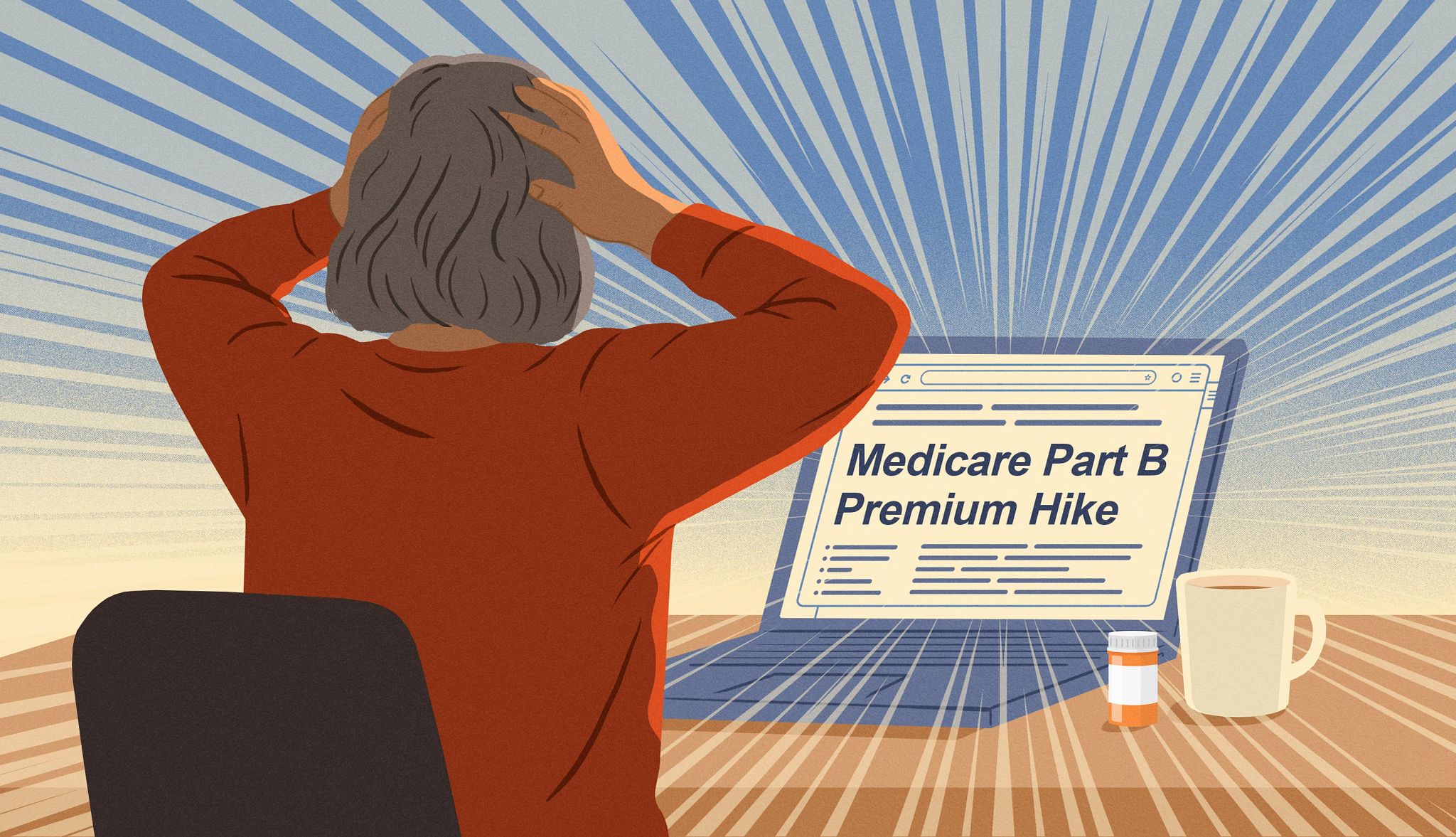Health care inflation often exceeds other inflation because of the introduction of new, high-priced drugs; technological advancements in medicine; the rising use of services since an aging population has more health care needs and chronic conditions; and expansions in insurance coverage. Medical care has its own subcategory in the Consumer Price Index, but it generally lags further behind other CPI data, according to the Peterson-KFF Health System Tracker.
The Social Security COLA announced at the end of October will boost the average for retirees by $56.
The payment bump will easily cover the $17.90 Part B premium increase for most who get Social Security. That means the hold-harmless rule wouldn’t apply to most Part B enrollees in 2026, says Rachel Schmidt, research professor at the Medicare Policy Initiative at Georgetown University’s Center on Health Insurance Reforms..
How the hold-harmless provision works
If the Part B premium goes up $10 and the annual Social Security COLA increases a monthly benefit payment by $8, “then I would pay last year’s premium plus $8. I would be ‘held harmless’ from $2 of the $10 increase,” says Casey Schwarz, senior counsel for education and federal policy at the Medicare Rights Center. The national nonprofit advocacy organization is based in New York.
In addition to covering doctor and outpatient bills, Medicare Part B also helps pay for certain home health services; durable medical equipment such as wheelchairs, walkers and braces; as well as some medical and health services that Medicare’s Part A hospital benefit doesn’t include.
If you’re retired and receiving Social Security, the monthly Part B premium is typically deducted from your monthly benefit. The hold-harmless rule protects only those who use this deduction.
With the 2026 Medicare Part B premiums and the Social Security COLA increase announced, the hold-harmless rule would protect a small number of people whose Social Security check falls well below the average monthly benefit for retirees. The same is true for people who received far less than the August average monthly survivor benefit of $1,575 or the August average Social Security Disability Insurance payment of $1,446.
Only eligible recipients whose monthly Social Security benefit is $639 or less will be protected from the full premium increase by the hold-harmless rule since the Part B premium increase is $17.90 and the cost-of-living allowance is 2.8 percent. That’s because $17.90 is 2.8 percent of $639.
“Luckily, there’s that provision so that they don’t actually lose money,” Benton says. But these recipients’ entire COLA could go toward their Part B premium increase.
Hold-harmless rule doesn’t cover everyone
The hold-harmless provision will not protect you, Schwarz says, if you:
- Are new to Medicare in 2026
- Receive a quarterly bill for Part B
- Pay a higher Part B premium because your income is higher, or
- Are enrolled in a Medicare Savings Program (MSP), the eligibility groups through which state Medicaid programs pay Medicare premiums and cost-sharing for Medicare beneficiaries with limited incomes. But states end up feeling much of the pinch.
“Most of the time, the hold-harmless provision either applies to everybody or it applies to only those with very low Social Security” payments, Schwarz says.
In the past 10 years, the Medicare Board of Trustees’ annual Part B premium projections have been accurate three times. They were off by just 10 cents for 2024 and 30 cents for 2020.
But four times in the past decade, their projections were at least 3 percentage points higher than the actual Part B premium amounts. That includes 2016 when the trustees predicted Part B premiums would increase by 52 percent from 2015 because of high Part B spending in 2014, a need to boost the Part B trust fund reserves and the lack of a Social Security COLA for 2016, according to KFF.
In 2021 and 2023 actual Part B premiums were $4.80 and $5.20 less than Medicare trustees predictions.
In 2015, the Centers for Medicare & Medicaid Services said, “We’re going to have to really increase the Part B premium a lot” in 2016 for the 30 percent of enrollees who wouldn’t be protected by the hold-harmless rule, Schmidt says. That’s because they’re “going to have to cover the cost of the 70 percent” who would be protected by the rule.
“Then Congress stepped in and said, ‘Whoa, don’t do that. We want you to figure out what the premium increase would have looked like if there weren’t a hold-harmless’ ” rule, she says.
The Bipartisan Budget Act of 2015 provided money that led to a more reasonable 16 percent increase in Part B premiums in 2016 for the 30 percent of unprotected enrollees, according to KFF. The other 70 percent of enrollees, who came under the hold-harmless rule, paid the same monthly Part B premium as they did in 2015, $104.90.
“They made a change in law for that one year,” Schmidt says.
VIDEO: AARP’s Fight Pays Off with Medicare Rx Drug Savings
Join our fight to protect Medicare
AARP is working to keep Medicare strong. Here’s how you can help.
- Sign up to become an AARP activist for the latest news and alerts on issues you care about.
- Find out more about how we’re fighting for you in Congress and across the country.
- See the latest AARP research on Medicare and more.
- AARP is your fierce defender on the issues that matter to people 50-plus. Become a member or renew your membership today.





































































More From AARP
Routine Medicare Telehealth Benefits Extended
Home-based benefit helps caregivers, people with disabilities
What to Look for in a Medicare Agent or Broker
Ask how they get paid. Find out what they don’t offer
7 Changes You’ll See Coming to Medicare in 2026
10 drugs get lower prices, but Part D spending cap increases